Sissi Xiaoxiao Wu
Energy-Efficient Beamforming and Resource Optimization for AmBSC-Assisted Cooperative NOMA IoT Networks
Sep 11, 2022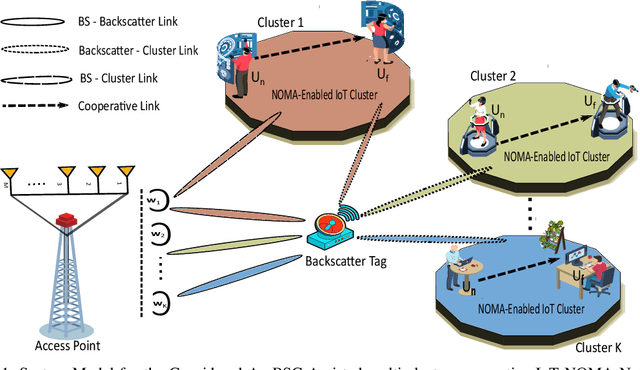
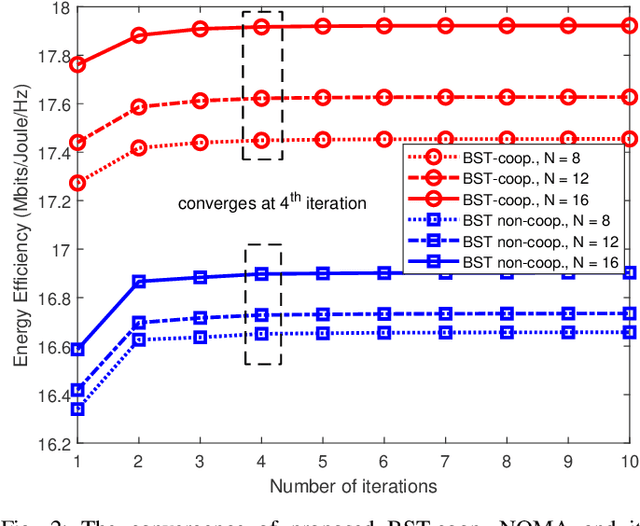
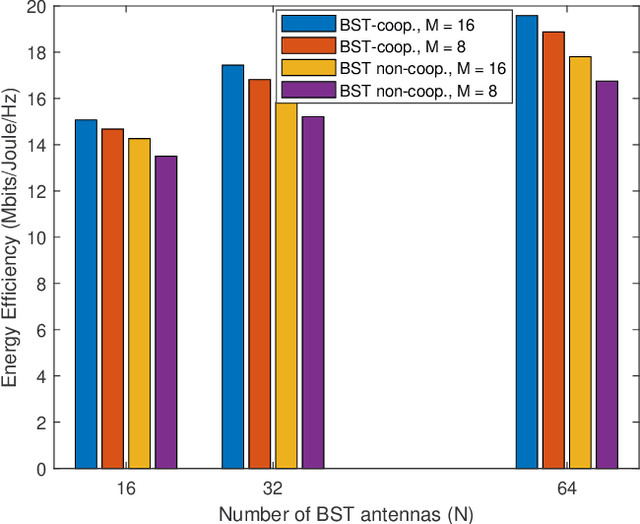
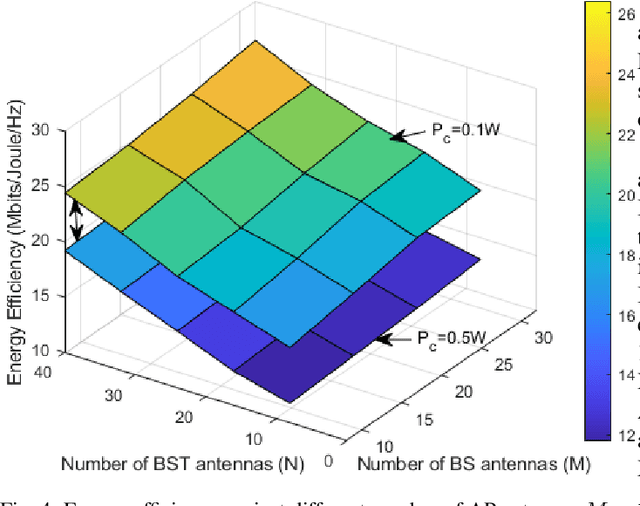
Abstract:In this manuscript, we present an energy-efficient alternating optimization framework based on the multi-antenna ambient backscatter communication (AmBSC) assisted cooperative non-orthogonal multiple access (NOMA) for next-generation (NG) internet-of-things (IoT) enabled communication networks. Specifically, the energy-efficiency maximization is achieved for the considered AmBSC-enabled multi-cluster cooperative IoT NOMA system by optimizing the active-beamforming vector and power-allocation coefficients (PAC) of IoT NOMA users at the transmitter, as well as passive-beamforming vector at the multi-antenna assisted backscatter node. Usually, increasing the number of IoT NOMA users in each cluster results in inter-cluster interference (ICI) (among different clusters) and intra-cluster interference (among IoT NOMA users). To combat the impact of ICI, we exploit a zero-forcing (ZF) based active-beamforming, as well as an efficient clustering technique at the source node. Further, the effect of intra-cluster interference is mitigated by exploiting an efficient power-allocation policy that determines the PAC of IoT NOMA users under the quality-of-service (QoS), cooperation, SIC decoding, and power-budget constraints. Moreover, the considered non-convex passive-beamforming problem is transformed into a standard semi-definite programming (SDP) problem by exploiting the successive-convex approximation (SCA) approximation, as well as the difference of convex (DC) programming, where Rank-1 solution of passive-beamforming is obtained based on the penalty-based method. Furthermore, the numerical analysis of simulation results demonstrates that the proposed energy-efficiency maximization algorithm exhibits an efficient performance by achieving convergence within only a few iterations.
Energy Efficiency Maximization for Backscatter-Enabled Coded-Cooperative NOMA Under Imperfect SIC
Aug 01, 2022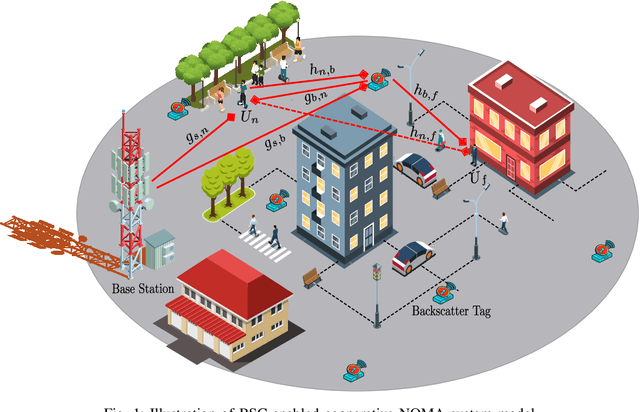
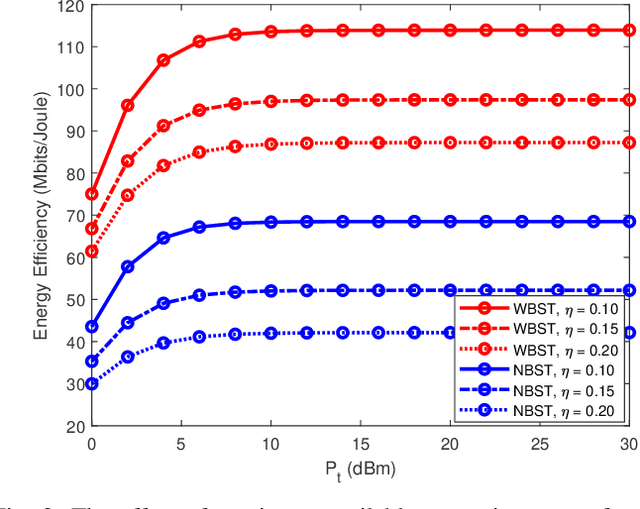
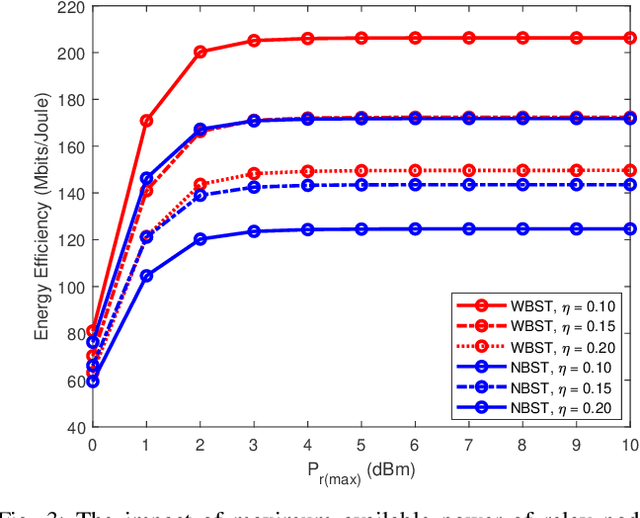
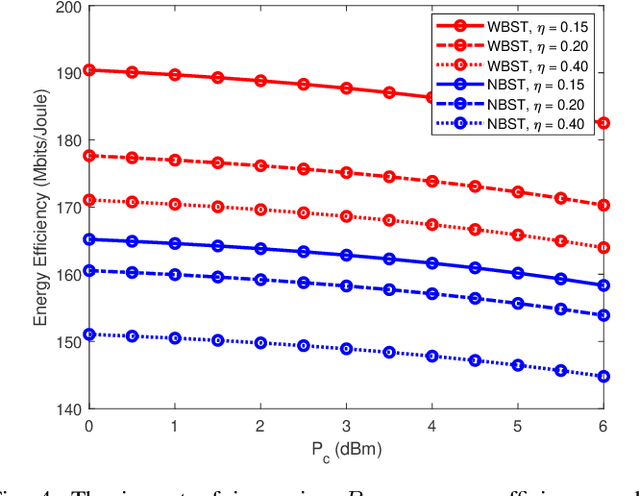
Abstract:In this manuscript, we propose an optimization framework to maximize the energy efficiency of the BSC-enabled cooperative NOMA system under imperfect successive interference cancellation (SIC) decoding at the receiver. Specifically, the energy efficiency of the system is maximized by optimizing the transmit power of the source, power allocation coefficients (PAC) of NOMA users, and power of the relay node. A low-complexity energy-efficient alternating optimization framework is introduced which simultaneously optimizes the transmit power of the source, PAC, and power of the relay node by considering the quality of service (QoS), power budget, and cooperation constraints under the imperfect SIC decoding. Subsequently, a joint channel coding framework is provided to enhance the performance of far user which has no direct communication link with the base station (BS) and has bad channel conditions. In the destination node, the far user data is jointly decoded using a Sum-product algorithm (SPA) based joint iterative decoder realized by jointly-designed Quasi-cyclic Low-density parity-check (QC-LDPC) codes obtained from cyclic balanced sampling plans excluding contiguous units (CBSEC). Simulation results evince that the proposed BSC-enabled cooperative NOMA system outperforms its counterpart by providing an efficient performance in terms of energy efficiency. Also, proposed jointly-designed QC-LDPC codes provide an excellent bit-error-rate (BER) performance by jointly decoding the far user data for considered BSC cooperative NOMA system with only a few decoding iterations under Rayleigh-fading transmission.
Detection of Insider Attacks in Distributed Projected Subgradient Algorithms
Jan 18, 2021
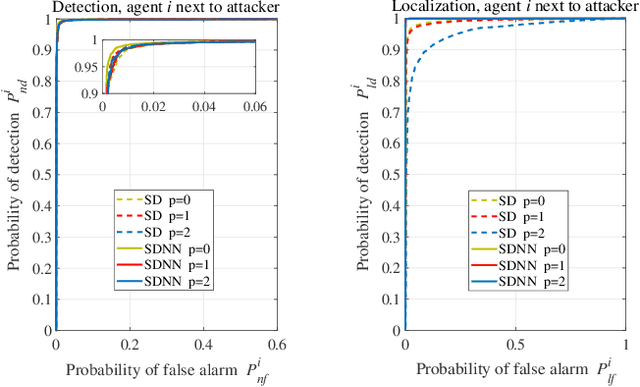
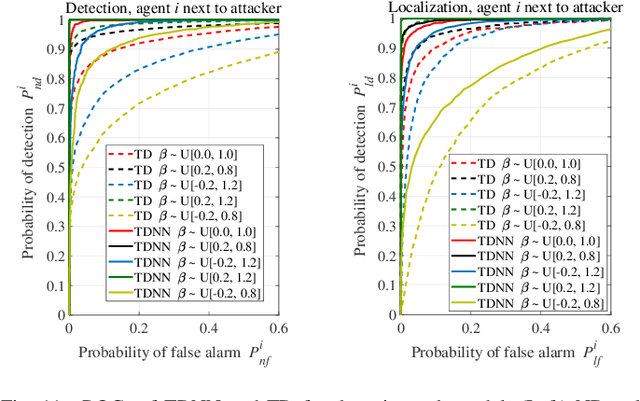
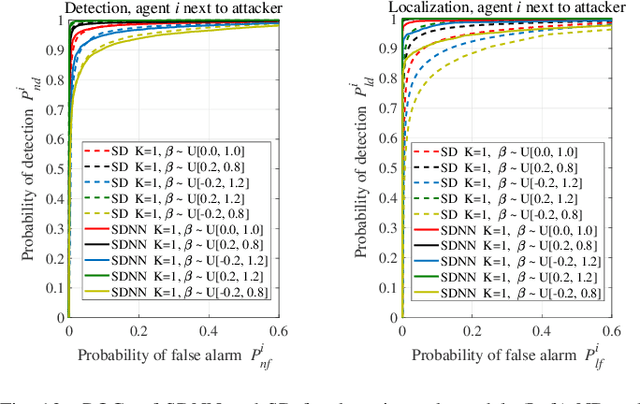
Abstract:The gossip-based distributed algorithms are widely used to solve decentralized optimization problems in various multi-agent applications, while they are generally vulnerable to data injection attacks by internal malicious agents as each agent locally estimates its decent direction without an authorized supervision. In this work, we explore the application of artificial intelligence (AI) technologies to detect internal attacks. We show that a general neural network is particularly suitable for detecting and localizing the malicious agents, as they can effectively explore nonlinear relationship underlying the collected data. Moreover, we propose to adopt one of the state-of-art approaches in federated learning, i.e., a collaborative peer-to-peer machine learning protocol, to facilitate training our neural network models by gossip exchanges. This advanced approach is expected to make our model more robust to challenges with insufficient training data, or mismatched test data. In our simulations, a least-squared problem is considered to verify the feasibility and effectiveness of AI-based methods. Simulation results demonstrate that the proposed AI-based methods are beneficial to improve performance of detecting and localizing malicious agents over score-based methods, and the peer-to-peer neural network model is indeed robust to target issues.
 Add to Chrome
Add to Chrome Add to Firefox
Add to Firefox Add to Edge
Add to Edge